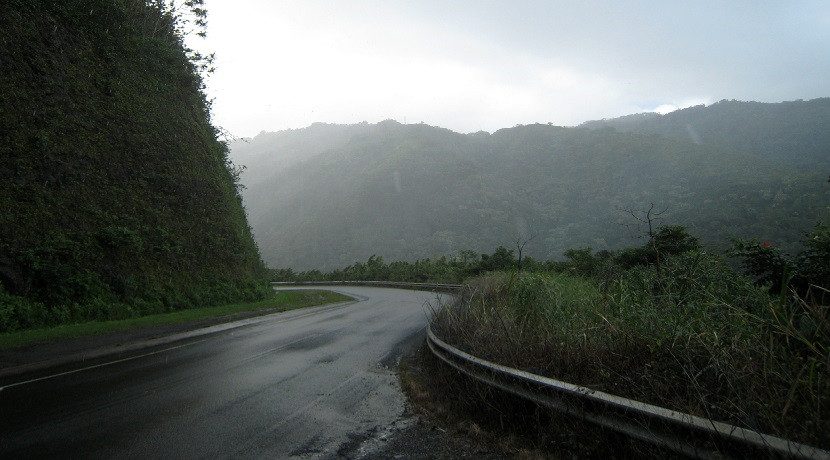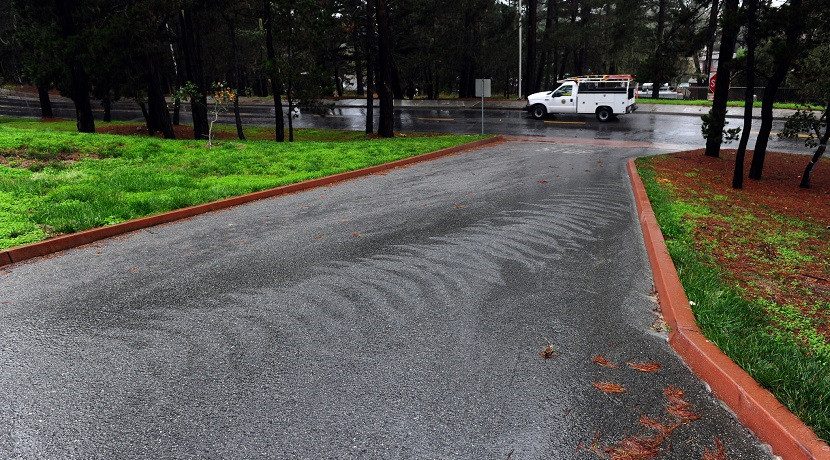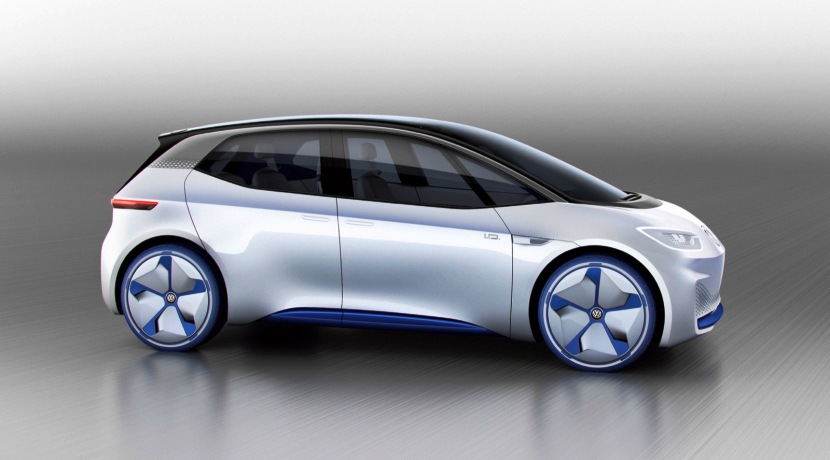It is coming storm: errors when driving with rain that you should avoid

Now that bad weather is approaching , we better review the most dangerous mistakes when driving with rain . Circling well under these conditions does not limit itself to reducing speed a bit. You have to be clear about a series of notions to avoid swelling accident statistics.
The first thing you should be clear about is that you do not have to drive if you do not have enough visibility . It does not matter if you avoid all the errors that we are going to describe next, if the rain is so intense that it does not allow you to see conditions. It is not enough that you see the lights of the other cars, you should see both the traffic signs and the ground lines to do it safely.
Carry the tires in bad condition
Ten Keep in mind that the condition of your tires is more important than ever when it rains. If you do not have furrows deep enough , the risk of aquaplaning is much greater than if they were in good condition. This is because your drawing can not evacuate the water that accumulates in front of the rubber in the form of a wave . An effect that occurs at highway or highway speeds. If this wave is pronounced enough, it will go under the wheel lifting it and causing the loss of grip.
The minimum legal depth of the grooves on your tire is > 1.6 mm , but you should not reach that limit if you are driving with heavy rain. Neither should you neglect the windshield wipers, because if they are in poor condition your visibility will be greatly reduced with rain.

Misuse of car lights
Many cars made in recent years they have daytime running lights and automatic lighting. Whether this is your case or not, you should bring the dipped beam lights on because the daytime lights only work in the front . If the rain is very intense, you will have to use the fog lights . The DGT itself mentions them in their regulation for these issues:
Rear fog light
"Rear fog light only It should be lit when the weather or environmental conditions are especially unfavorable, such as thick fog, heavy rain, heavy snow or heavy clouds of dust or smoke. "
Front fog lamp (optional)
"When there are weather or environmental conditions that significantly reduce visibility, such as fog, heavy rain, snow, clouds of smoke or dust, any other analogous circumstance it will be obligatory to use the lighting. In these cases the front fog lamp or the short or long-range light should be used. The front fog lamp can only be used in such cases or in narrow sections of many curves. "

Do not use the emergency flashing light or warning just because it rains heavily. These lights serve to warn of a danger to the rest of vehicles. If you activate them, the drivers that precede you may think there is a stop or an obstacle ahead and that is not the case.Especially if the road traveled is the same day after day. If this is your case, try to remember that when the pavement is wet the braking distance can be doubled compared to the dry pavement.
Circular by the wrong place of the road
Road inclinations
Although not always easy to see, the design of The roads are designed to evacuate the water as soon as possible . In the curves with cant , the water will tend to go towards the lower part, so it is convenient to be in the highest lane. When we are on a flat road, they are usually built with a shape somewhat warped towards their sides to clear the water. In these cases it is convenient to drive through the part of your lane closest to the center .

Furrows in the water
When the rain is intense, it is We recommend to take advantage of the brand left by previous cars. These grooves, which are not always visible, are due to the fact that their tires have already evacuated part of the water that was on the ground. This way you make sure that yours have to do less work. This effect is greater and more visible when what we have before us is a truck or a similar heavy vehicle. If you do this, you should never lose attention by focusing only on following some marks. The remedy can be worse than the disease.
Avoid the puddles
When the rainy season arrives, the workshops receive more cars with damage to the suspension, the lows and the wheels. An effect that occurs because when it rains, there are many drivers who fall into the trap of deceptive puddles . In the same way that you would not throw yourself into a pond that you do not know its depth , do not put the car in a puddle you do not know anything about. This imprudence can be much more serious if the puddle that hides a sinkhole is on a road that is driven at 90 or 100 km/h.
What if the rain becomes a flood?
If the storm is so intense that it becomes a flood or flood. Avoid driving as much as possible. If the current reaches half a meter in height and 10 km/h in speed , it is likely that you will finish lifting your car . You must not be inside when that point arrives, because when the car is dragged it can get into a deeper area or even tip over.
So that this does not happen to you, before you get to that situation get off from the car on the opposite side to which the water comes and move in favor of the current. Fighting against it will only cause the objects you are dragging to hit you. Climb to a high place and safe until the flood passes.
Too much speed
Even if you have the tires in good condition, it is important that you adapt your speed to the weather conditions. Do not trust yourself even if your car holds a lot. Actually the wider the tire, the more chances there are that the water will lift them and lose any grip they may have.
If for whatever it is you fall in the dreaded aquaplaning , keep the steering wheel grip firm and do not turn it any more than the road requires. If you do, the car will lurch when it touches the asphalt again and it will be very difficult to control.Although less and less are seen, the zebra crossings with a thick paint volume eliminate the roughness of the asphalt and are real skating rinks. Imagine this happening to you in an emergency braking with a pedestrian you have not seen.
Now that the bad weather is approaching, we recommend that you Take a look at the article: Tips for starting the car "cold".Images - Carol VanHook, Presidio of Monterey, Pablo Segade, Josh Berglund19 and M. Moers
You may be interested


